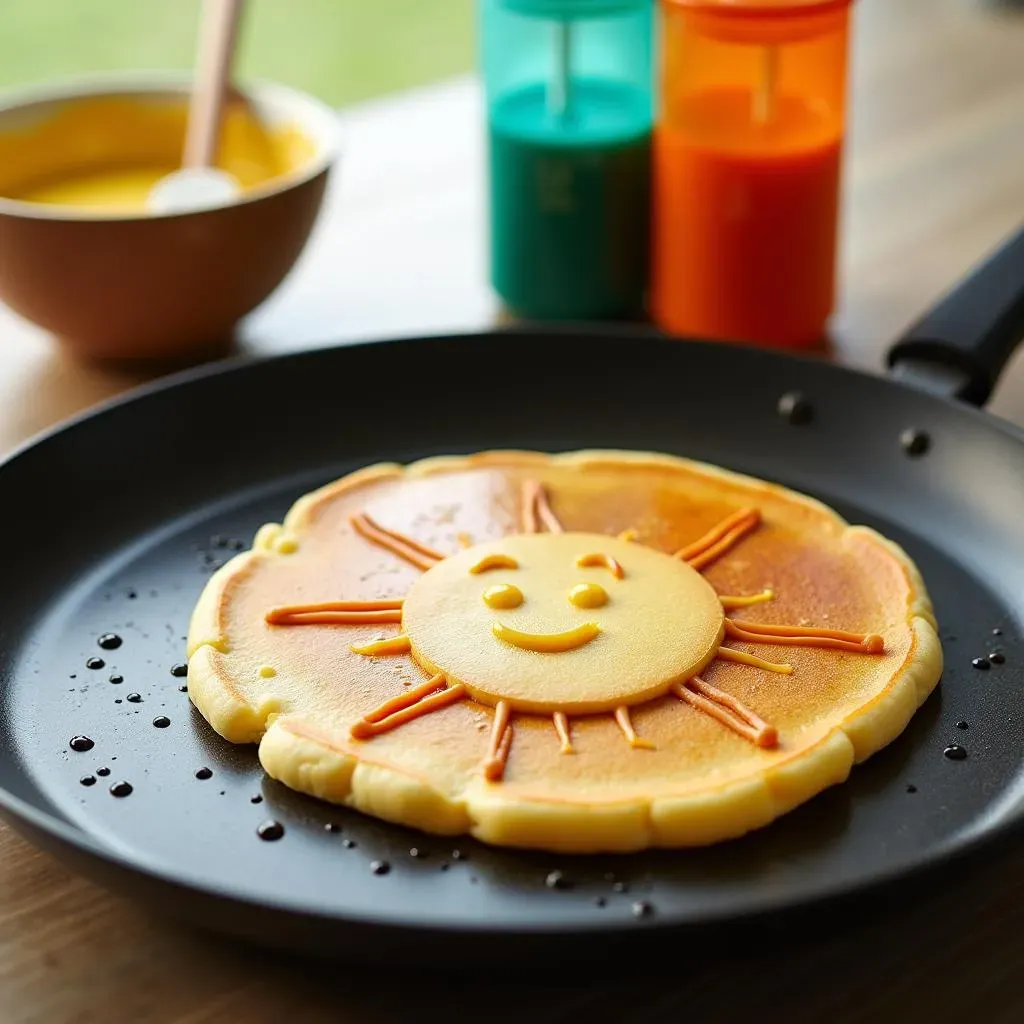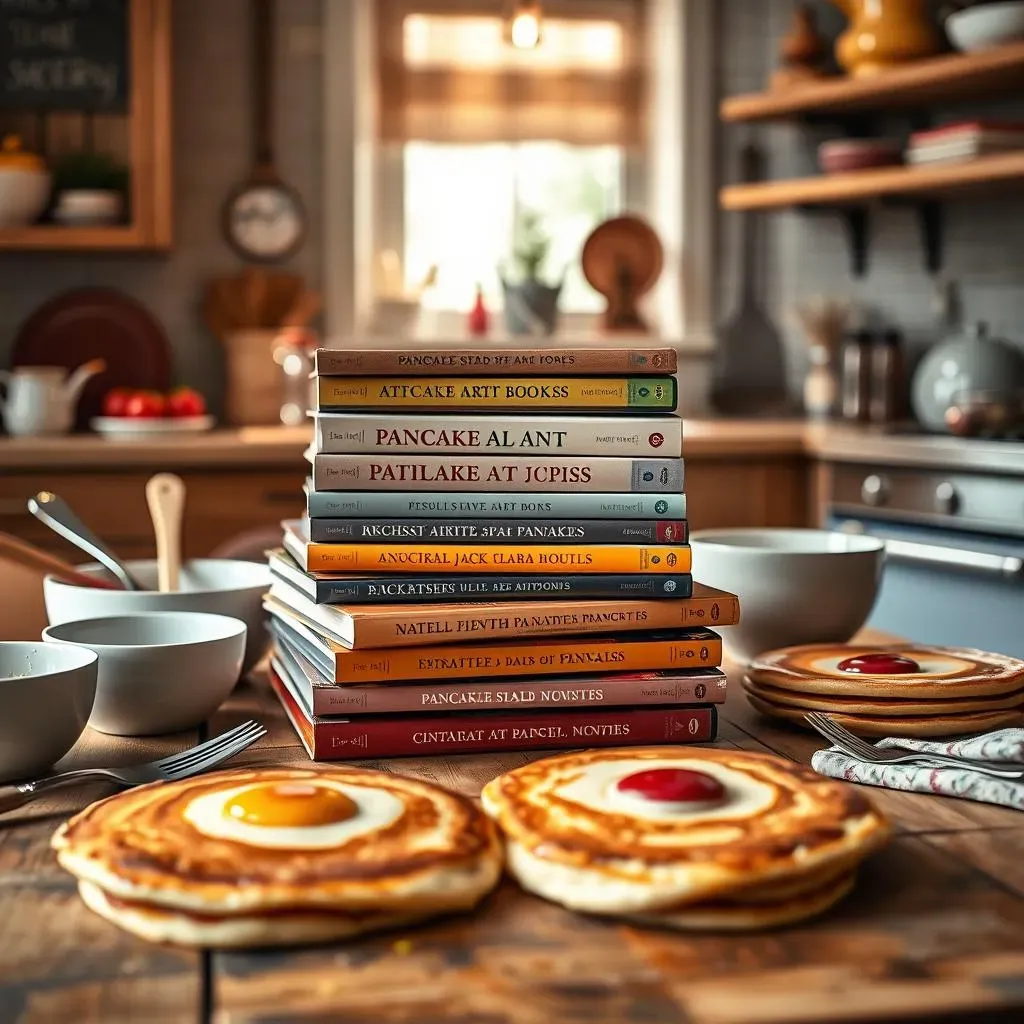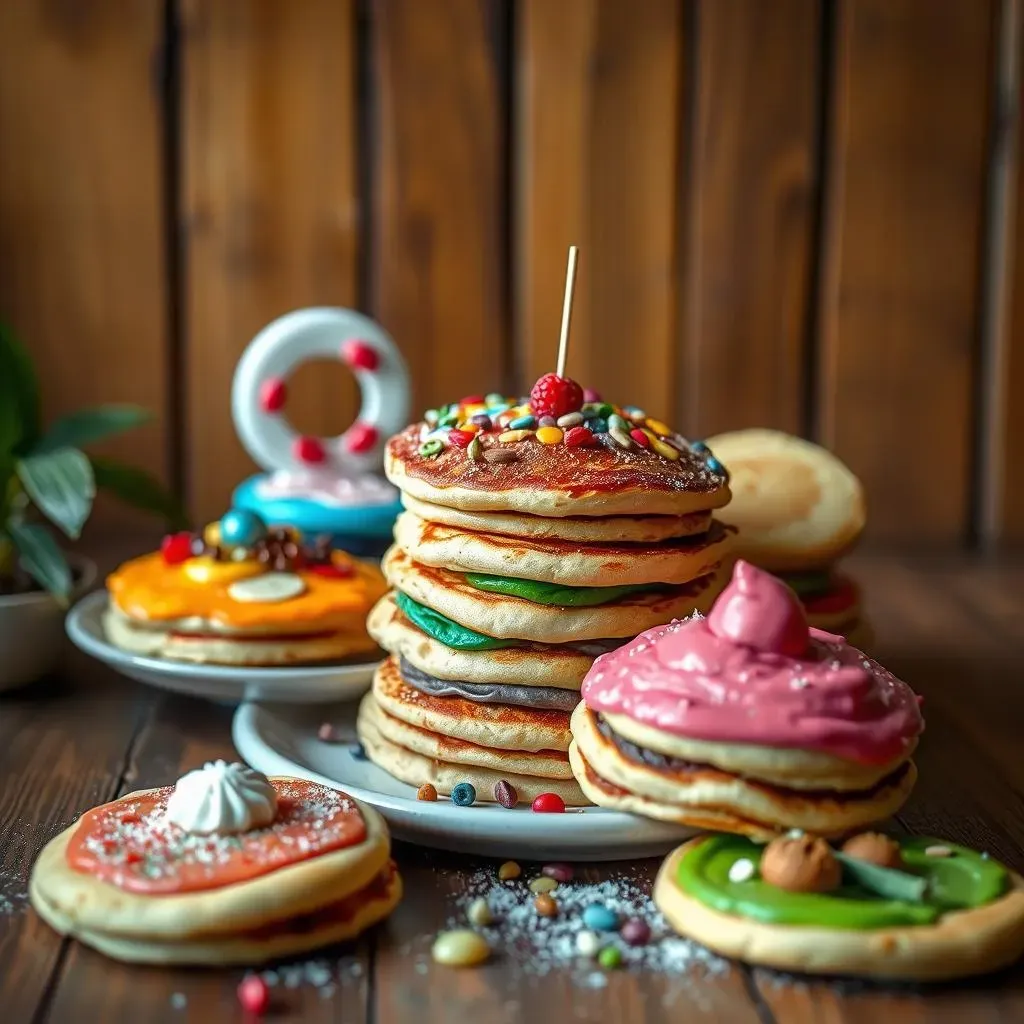Table of Contents
Ever stared at a plain pancake and thought, "This needs more pizzazz?" Well, you're not alone! The world of pancake art is here to rescue breakfast from its boring fate, and the best part is, you don’t have to be a culinary wizard to get started. Forget perfect circles; we’re talking about turning your griddle into a canvas. This article is your guide to mastering this fun skill, focusing on the resources that'll help you the most: pancake art books. These aren't just cookbooks; they're your portals to creating edible masterpieces. We’ll explore the essential tools and techniques you’ll need, from getting the right batter consistency to wielding your squeeze bottles like a pro. Then, we’ll flip through the pages of some awesome pancake art books, showing you how they can take you from simple shapes to intricate designs. Finally, we'll go beyond basic batter, looking at how flavors and colors can make your creations even more spectacular. So, grab your apron, and let’s get flipping!
Getting Started with Pancake Art: Essential Tools and Techniques

Getting Started with Pancake Art: Essential Tools and Techniques
Alright, so you're itching to make some pancake art, huh? It's not as intimidating as it looks, I promise. First things first, you'll need a few key items to get started. Forget fancy chef gear; we're talking about the basics. Think of it like preparing for a painting project, but instead of canvas and paint, we've got a griddle and batter. A good non-stick griddle is your best friend. It will help prevent your delicate designs from sticking and tearing. Next, you will need some squeeze bottles. They will allow you to control the flow of batter and create those fine lines and intricate shapes. And yes, you will need some batter, obviously! It needs to be the right consistency – not too thick, not too thin, like a smooth, pourable paint.
Now, let's talk technique. It's not just about squirting batter onto a hot surface; there's a bit of finesse involved. Start by lightly greasing your griddle, a little butter or oil goes a long way. Then, with your squeeze bottle, begin outlining your design. Remember, the outline is key; it’s like the sketch before you start coloring. Once the outline is set, fill in the details, working from the center outwards. The heat of the griddle will slowly cook your batter. Be patient, and don't try to flip too soon, otherwise you will have a mess. Wait until the edges are set, and the top looks slightly dry, then go for it. It might take a few tries, and that’s fine; even the best pancake artists had their fair share of pancake fails. It's part of the fun!
Essential Tool | Why It's Important |
|---|---|
Non-Stick Griddle | Prevents sticking and tearing. |
Squeeze Bottles | Allows for controlled batter flow. |
Spatula | Crucial for flipping with care. |
Batter | Needs the right consistency. |
One more thing, don’t be afraid to experiment! Use different tips on your squeeze bottles to get different line widths. Try using different colors of batter, you can achieve this by adding food coloring. If you're not feeling super artistic, start with basic shapes: circles, hearts, stars, and then slowly go to bigger things. It's like learning to draw, but with breakfast. And trust me, there's no better way to start your day than with a creative, edible work of art. So grab your tools, get that griddle hot, and let's make some pancake magic happen!
Pancake Art Books: From Basic Shapes to Complex Designs

Pancake Art Books: From Basic Shapes to Complex Designs
The Magic of Pancake Art Books
So, you've got your tools and you've maybe tried a few basic shapes. Now it's time to take things up a notch. This is where pancake art books come in, they’re like having a personal art teacher, but one that uses batter. These books are not just collections of recipes; they're filled with step-by-step guides, tips, and a whole lot of inspiration. From simple geometric forms to characters, these books show you how to turn a simple breakfast into something extraordinary. They break down complex designs into manageable steps, making it easy for anyone to follow along. I remember when I first started, I was all over the place, but these books showed me how to be more accurate and creative.
Stepping Up Your Design Game
One of the coolest things about pancake art books is how they progress from the basics to more complicated designs. You’ll start with simple shapes like hearts, stars, and maybe some basic cartoon faces. Then, as you get better, you’ll be able to tackle more intricate stuff like animals, flowers, and even detailed landscapes! The books often include templates that you can trace or follow, which is super helpful when you’re trying to get the hang of more complex forms. They also explain how to use different techniques, like layering batter to add depth and dimension to your artwork. It's really amazing to see how a few lines of batter can turn into something so impressive. It's all about practice and having the right guidance.
Book Feature | Benefit |
|---|---|
Step-by-Step Guides | Easy to follow instructions for all skill levels. |
Templates | Helpful for creating complex designs. |
Technique Tips | Teaches layering and other advanced skills. |
Inspiration | Sparks creativity and imagination. |
Choosing the Right Book for You
With so many pancake art books out there, how do you pick the right one? Consider what you are looking to create. If you’re just starting, look for books that focus on beginners with simple designs and clear instructions. If you're feeling more adventurous, go for a book that tackles more complex designs and techniques. Some books are great for families, with fun, kid-friendly designs, while others are aimed at adults who want to really refine their skills. Don’t be afraid to check out reviews and look at previews before you buy. The goal is to find a book that matches your style and skill level and will keep you inspired and excited to keep flipping. Trust me, having the right resource can make all the difference in your pancake art journey. I always recommend starting with something that feels manageable, so you do not get discouraged.
Beyond the Batter: Exploring Different Flavors and Colors in Your Pancake Art

Beyond the Batter: Exploring Different Flavors and Colors in Your Pancake Art
Flavor Adventures in Pancake Land
Okay, so you're a pancake art pro, but what about the taste? Let's be real, a beautiful pancake that tastes like cardboard is a sad pancake. I say, let's pump up the flavor! You can add a splash of vanilla extract, a dash of cinnamon, or even some citrus zest to your batter to give it that extra oomph. Chocolate chips, blueberries, or mashed bananas can be mixed in for a more interesting bite. And don’t even get me started on savory options; think cheese, herbs, or even a bit of cooked bacon for a breakfast that's both a work of art and a flavor explosion. I once tried a pancake with a hint of cardamom, and wow, it was a game changer. It's all about experimenting and finding what excites your taste buds.
The cool part is that you can use different flavors to compliment your designs. Imagine a lemon-flavored sun or a chocolate-flavored teddy bear; the options are endless. You can even use different flavors for different parts of your design. For example, a vanilla base with a chocolate swirl or a blueberry accent. It's like painting with flavors, and it's just as fun. The key is to incorporate these additions without altering the batter consistency too much, so the pancake still cooks properly and maintains its shape. It's all about striking that perfect balance between taste and artistry.
Color Your World, One Pancake at a Time
Alright, now let’s add some color! This is where things get really fun. Food coloring is your best friend here. You can use gel, liquid, or even natural food dyes to create a rainbow of pancake batter options. I like to divide my base batter into smaller bowls and then add a few drops of different colors to each. It's like having a painter’s palette but with edible paints. You can make pastel shades, bold bright colors, or even try mixing colors to create your own unique hues. I’ve even used beet juice for a natural pink and spinach juice for a green hue, just for the fun of it.
The colors not only make your designs more visually appealing but also add an extra layer of creativity. Imagine a blue ocean scene with green seaweed or a bright yellow sun with orange rays—the possibilities are limitless. And you can use different colors to highlight different parts of your design, making it pop even more. When you are adding colors, start with just a few drops and mix it well, then add more until you get the shade you want, this will help you avoid making colors too intense. It's all about having fun and making your breakfast as vibrant as your imagination.
Flavor Enhancements | Color Enhancements |
|---|---|
Vanilla Extract | Gel Food Coloring |
Cinnamon | Liquid Food Coloring |
Citrus Zest | Natural Food Dyes |
Chocolate Chips | Beet Juice |
Blueberries | Spinach Juice |